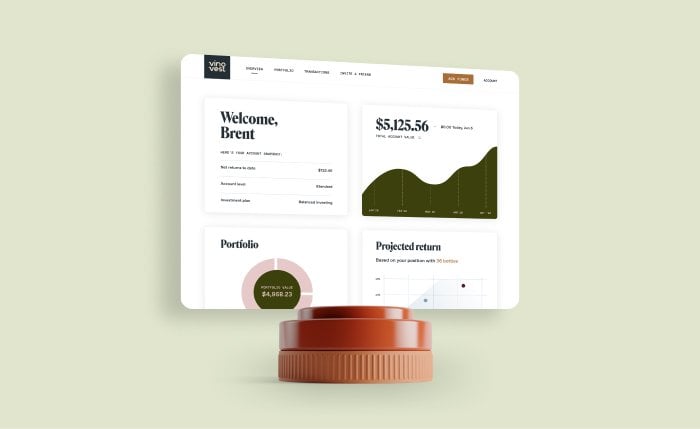Treasury Inflation Protected Securities: Pros And Cons (2025)
For traditional investors, Treasury Inflation-Protected Securities (TIPS) has been a reliable hedge against inflation, mainly because the interest rate offered on TIPS matches the changes in the Consumer Price Index.
But the question is:
Is TIPS the best investment option in 2024?
Let’s dive deeper and discover how TIPS works, how inflation affects TIPS prices, a few pros and cons of investing in TIPs, and address a few other questions you may have.
We’ll also explore how fine wine makes a great alternative asset to hedge your investment portfolio against inflation.
Further reading
- Here’s the ultimate guide to Investing In Fine Wine in 2022.
- Also, discover 10 Expert Tips To Beat Inflation In 2022.
How Do TIPS Work?

Treasury Inflation-Protected Securities are marketable securities whose principal amount is adjusted by changes in the Consumer Price Index (CPI.) Also, they are pretty low-risk since they’re issued by the government of the United States.
So, with inflation (a rise in CPI), the interest payment on your adjusted principal value increases, and with a deflation (a drop in CPI), the interest payment on your adjusted principal decreases.
But how exactly does the change in CPI affect the interest rate payment of your inflation protected security?
How does Inflation Adjustment Affect Your TIPS?

The government issues TIPS for 5, 10, and 15 years in increments of $100. The interest payments on your TIPS occur every six months based on the rise or drop in CPI.
TIPS pays a fixed interest rate. However, it is paid on your adjusted principal. So, interest payments can vary from one period to the next.
When TIPS matures, you receive the adjusted principal or the original principal value, whichever is greater. So, you’re always protected from deflation.
Here’s how you can determine the interest payments applied to your adjusted principal value.
- Locate your TIPS fund on the TIPS Inflation Index Ratios page. Look for the Index Ratio corresponding to the interest payment date for your security.
- Next, multiply your original principal amount by the Index Ratio to get your adjusted principal.
- Finally, multiply your adjusted principal by half the stated coupon rate on your security. And you have your semi-annual interest rate.
Now that you know how to calculate your semi-annual interest rates, let’s look at some advantages and disadvantages of investing in TIPS.
Pros And Cons Of Investing In TIPS

Here are a few pros and cons of TIPS investment.
Pros of Investing in TIPS:
- TIPS is low risk because the United States government backs this investment class.
- TIPS is great at combating inflation risk and protecting the purchasing power of your fixed income because its value matches the rising inflation. Moreover, since the Federal Reserve Bank tries to maintain a healthy inflation rate, there is a high chance that you’ll always benefit from the semi-annual interest payments.
- Apart from combating inflation risk, TIPS also protects an investor from losing money. The par value increases and decreases with deflation. However, at maturity, the investor is paid the adjusted principal or the original principal value (whichever is greater.) It means that even if the investor doesn’t earn good interest due to deflation, they won’t lose any money.
Cons of Investing in TIPS:
- Even though TIPS offer inflation protection, they are usually more expensive than other investments like nominal bonds. TIPS typically pay lower interest rates than other securities, so they aren’t the best choice for an investor with a fixed income.
- TIPS also comes with an interest rate risk. During deflation, the investor will either lose the interest earned or not earn anything.
- The interest earned on your TIPS bond is taxable even though you won’t make money until your treasury securities reach maturity. To avoid tax complications, you can hold your treasury bond in a tax-deferred retirement account.
- Investing in TIPS may protect the purchasing power of your fixed income, but it doesn’t offer you any real income. The interest payments match the inflation rate, so at maturity, your real return would be 0.
So, before you build an inflation protected securities portfolio, get in touch with a financial advisor. They will help you study the inflation expectations, invest in a treasury security bond smartly, and also help you invest in some other alternative investment grade assets like fine wine.
Other FAQs About Treasury Inflation Protected Securities
Before we take our leave, let’s take a look at three other questions you may have about TIPS.
1. How Do You Buy Treasury Inflation Protected Securities?

You can buy an inflation protected securities fund through TreasuryDirect, banks, or brokers.
You can bid for TIPS by:
- Noncompetitive Bid: In this bid, you can accept the yield determined at auction and receive the TIPS you want in the total amount.
- Competitive Bid: In this bid, you specify the yield you are willing to accept. Your bid will be accepted in full if it’s less than the yield determined at auction. If it is equal to the high yield, it will be accepted in less than the full amount. However, it will be rejected if the yield you specify is higher than the yield set at auction.
You can also go for a TIPS mutual fund or Exchange-Traded Fund (ETF).
Here are a few funds to go for if you want to invest in a TIPS mutual fund:
- Fidelity Inflation-Protected Bond Index Fund (FIPDX)
- Loomis Sayles Inflation Protected Securities Fund Retail Class (LIPRX)
- American Funds Inflation Linked Bond Fund Class F-1 (BFIFX)
- T. Rowe Price Inflation Protected Bond Fund (PRIPX)
Here are a few options if you’re looking for an Exchange Traded Fund.
- SPDR Portfolio TIPS ETF (SPIP)
- SPDR Bloomberg Barclays 1-10 TIPS ETF (TIPX)
- Goldman Sachs Access Inflation Protected US Bond ETF (GTIP)
2. Can You Buy TIPS for Your IRA?

Yes. You can include your TIPS bond or mutual fund in an individual retirement account. But, you cannot do it through the TreasuryDirect service.
You’ll need to ask your broker holding your retirement account to do it for you.
3. What Yield Does TIPS Have?

TIPS yield are often negative. Mainly because, after considering the effects of inflation, the real yield is often negative.
For example, if the 2-year treasury security yield is 1%, and inflation is 2%, the real yield becomes -1%. Since TIPS doesn’t outperform inflation, you’ll earn a nominal yield.
However, while the TIPS yield may be negative, your principal value will increase with inflation to get a good total return on your investment.
So, the pros and cons of investing in TIPS are out there for you to weigh!
Meanwhile, which other investments offer excellent total return and also provide inflation protection?
Fine Wine: The Ultimate Asset to Beat Inflation

Wine can be a great asset when looking for an investment with low inflation risk.
When the Covid-19 pandemic was at its peak in 2020, fine wine’s downturn was shorter and less severe than most mainstream assets like stocks and nominal bonds.
The Liv-ex 1000, one of the broadest wine indices, declined by just 4% at its lowest in March 2020. For other markets, the loss was in double digits.
Over the long term, the fine wine market has outperformed the International Monetary Fund’s (IMF) worldwide Consumer Price Index inflation. In 2021, when the average annual inflation rate in the US was 5%, the fine wine market grew by 23%.
It is because this market's primary drivers are internal factors like climate and winemaking. This makes it less susceptible to changes in inflation.
Also, it's a better inflation hedge than most other investments because if inflation rises, the dividends paid out by investments like a traditional bond become less attractive. But wine investments don't pay dividends, so they remain unaffected.
But how do you find an investment grade wine?
You can buy, store, and sell bottles directly or through online auctions, brokers, and wine investment platforms.
An expert wine investment company like Vinovest offers a convenient way to source, manage, and grow a portfolio of investment grade wines from the comfort of your home.
Vinovest will even store your wines in temperature-controlled bonded warehouses and match you with the highest-priced buyer when you decide to sell your wine.
All you need to do is sign upwith a credit card, debit card, or even crypto!
Diversify Your Investment Portfolio With Fine Wine!

TIPS are inflation-resistant securities that help you protect the purchasing power of your fixed income by earning interest that equals inflation. However, if you’re looking to grow your returns, you must invest in assets like wine that easily outperform inflation.

Get in touch with Vinovest and discover the world of fine wine investment.



